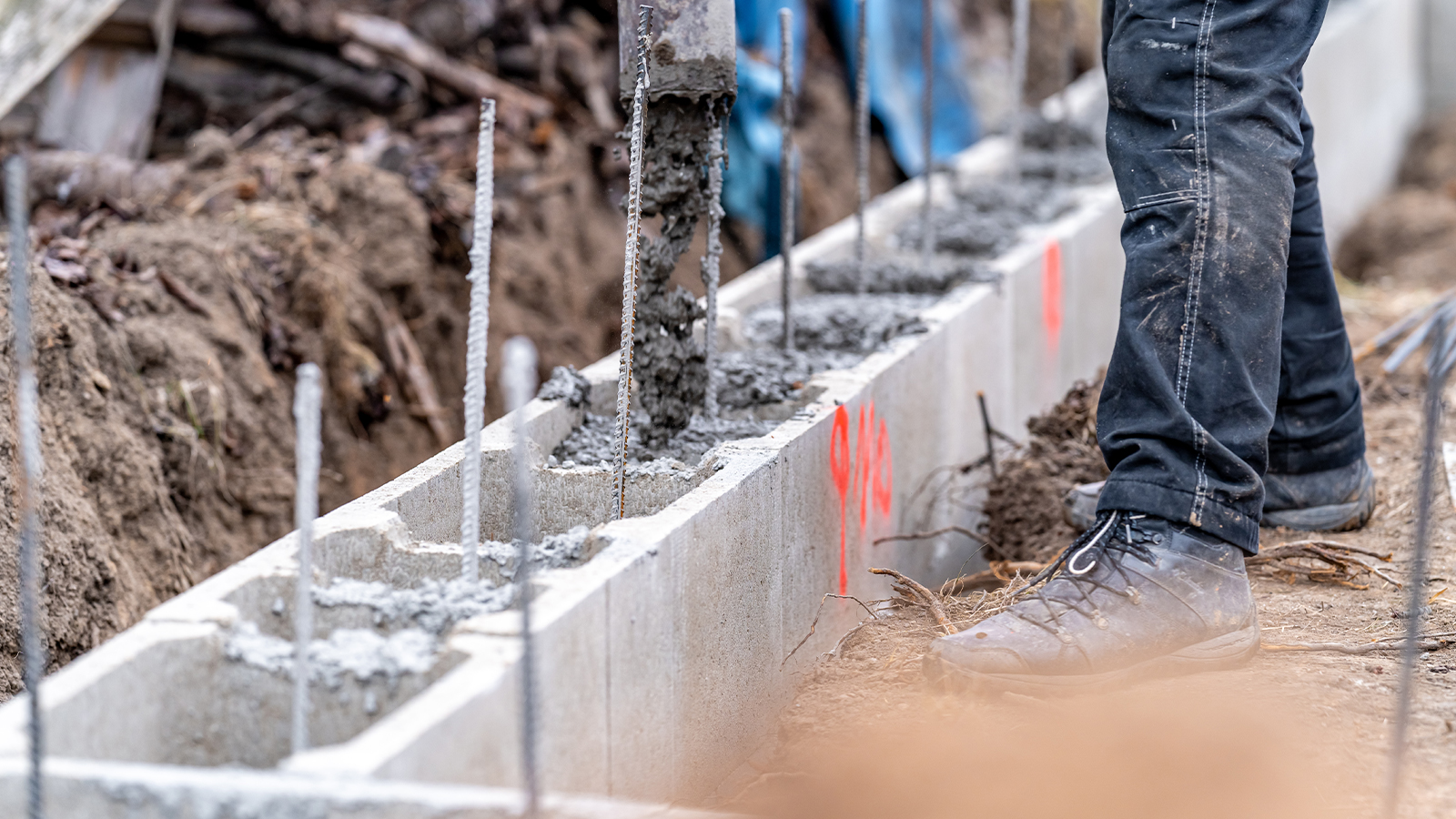Retaining walls play a crucial role in landscape architecture, offering both functional and aesthetic benefits. Beyond their apparent utility, these structures significantly influence property value, environmental stability, and design versatility. Whether you’re managing a sprawling commercial property or enhancing your home’s exterior, understanding retaining walls is essential for making informed decisions.
What Are Retaining Walls?
Retaining walls are engineered structures designed to resist the lateral pressure of soil or other materials. Their main purpose is to hold back the earth on sloped or uneven terrain, preventing soil from shifting or eroding, which could otherwise cause damage to surrounding structures. These walls are commonly used in landscaping to create terraces, level surfaces, and enhance the usability of areas that would otherwise be unfit for construction or plant growth.
Retaining walls are made from various materials, each offering distinct advantages depending on the project’s needs and aesthetic preferences. Common materials include:
- Concrete: Durable and versatile, concrete retaining walls are often used for both residential and commercial applications. Their ability to be molded into different shapes and sizes makes them ideal for customized designs.
- Stone: Natural stone retaining walls add timeless beauty and blend seamlessly with outdoor environments. Stone is particularly effective in creating a rustic or natural look in garden spaces.
- Timber: Wood is a popular choice for smaller-scale projects or residential gardens, offering a more natural aesthetic. However, it may require more maintenance than other materials.
- Brick and Block: These materials are often used for their sleek and modern appearance. Interlocking blocks are a popular option because they provide ease of installation and durability.
The design of retaining walls also varies. Some use gravity to stay in place, relying on the weight of the material itself to prevent soil movement. Others use reinforcing techniques like anchored walls or cantilever walls that incorporate supports or cables to further strengthen the structure.
Whether for residential landscaping, commercial properties, or large-scale construction projects, retaining walls are indispensable in managing land stability and transforming challenging terrains into functional, usable spaces.
The Functional Importance of Retaining Walls
Retaining walls serve several critical functions that make them an essential element of landscape architecture and design. These functions extend beyond simple aesthetic purposes to enhance the stability, safety, and usability of a property.
1. Soil Stabilization and Erosion Control
One of the key reasons retaining walls are essential is their ability to stabilize soil and prevent erosion. In areas with steep slopes or where heavy rainfall is common, soil can easily shift or wash away, leading to significant land degradation. This can cause damage to nearby properties, destroy plant life, and create hazardous conditions. A properly designed retaining wall holds back the soil, preventing erosion, and maintaining the integrity of the landscape. For commercial properties, such as those in warehouse construction, retaining walls prevent soil movement that can otherwise disrupt foundations and building integrity.
2. Creating Usable Land on Sloped Terrains
Land that is on a slope is often challenging to work with for landscaping or construction. Retaining walls transform these areas by leveling the ground and creating usable spaces, such as terraces, gardens, parking areas, or additional building space. This can dramatically increase the functional value of a property. For example, in a commercial setting, these walls can expand the usable footprint of a site, making it suitable for extra storage or development. By preventing soil erosion and leveling the ground, retaining walls increase the area that can be developed and cultivated.
3. Enhancing Drainage and Water Control
In regions with heavy rainfall, controlling water flow becomes critical. Without adequate management, water runoff can erode soil, flood basements, or cause puddles and stagnation that may damage landscaping or property foundations. Retaining walls contribute to effective drainage systems by slowing down or redirecting water, reducing the risk of water damage. Furthermore, these walls can be designed with weep holes or drainage systems that allow water to pass through without weakening the structure. These features are crucial when designing areas for commercial and residential landscaping, where proper drainage can be the difference between a well-maintained property and one prone to water damage.
4. Support for Structural Stability
In both residential and commercial construction projects, retaining walls play a crucial role in supporting the overall structural integrity of buildings. When constructing on a slope or in areas with unstable soil, retaining walls provide critical reinforcement to prevent the shifting of land and protect foundations. Without these structures, buildings may be at risk of foundation cracking, sinking, or tilting. In commercial construction, such as when we build interior drywall systems, structural stability is paramount, and retaining walls ensure that the land below and around the structure remains secure and supportive.
Aesthetic Benefits of Retaining Walls
Retaining walls are not just functional—they are also incredibly versatile in adding visual appeal to a property. By strategically placing retaining walls, you can dramatically enhance the aesthetics of a landscape, blending practical solutions with beautiful design elements.
1. Creating Visual Appeal and Design Depth
The use of retaining walls can add dimension and texture to your landscape design. For example, sloped areas can be transformed into multi-level garden spaces, with each level displaying different plants or flowers that thrive in different light and moisture conditions. The ability to create distinct layers in a garden using retaining walls helps avoid a monotonous flat design, offering a more dynamic and visually interesting landscape.
2. Material Variety for Different Styles
Retaining walls can be made from various materials, each lending itself to different design styles. For instance, stone walls can create a more rustic or natural aesthetic, while concrete or brick walls often work better in modern or urban settings. The flexibility in material choice allows property owners to tailor their retaining walls to match the overall design vision. Natural stone provides an earthy charm, while sleek, polished concrete can evoke a minimalist, contemporary feel.
3. Integration with Other Landscape Features
Retaining walls can integrate seamlessly with other landscape features such as water features, walkways, patios, and outdoor living spaces. Their ability to add structure to a garden or outdoor area allows for creativity in design. For example, a retaining wall can serve as a backdrop for a water fountain, create elevated flower beds, or provide separation between different sections of a landscape, such as a vegetable garden and a formal garden.
4. Long-term Durability and Maintenance
Unlike some other landscape features that may require frequent upkeep, retaining walls, especially those built from concrete, stone, or brick, are low-maintenance. Once installed correctly, they can withstand the elements for years without significant wear and tear. This long-lasting durability means that your landscape remains beautiful and functional over time, without the need for constant repairs or replacements.
Types of Retaining Walls
|
Type |
Material |
Key Benefits |
Ideal Applications |
|
Gravity Wall |
Stone, Concrete |
Simple construction, durable |
Residential landscaping |
|
Cantilever Wall |
Reinforced Concrete |
Efficient for taller walls |
Commercial and industrial properties |
|
Anchored Wall |
Steel, Concrete |
High strength, versatile |
Projects requiring robust support |
|
Sheet Pile Wall |
Steel, Wood |
Compact design, space-efficient |
Limited space construction areas |
Each type serves a unique purpose, and choosing the right retaining wall depends on factors like soil type, terrain, and project scope. If you’re unsure which material to use, check out our insights on concrete walls in commercial construction.
Why Choose Retaining Walls for Commercial Projects?
In commercial and industrial sectors, retaining walls are often seen as necessary investments rather than optional additions. They offer a combination of functional advantages that make them indispensable for businesses looking to optimize their properties.
1. Maximizing Property Value and Usability
For commercial properties, especially in urban settings where space is limited, retaining walls provide an opportunity to maximize the use of available land. By stabilizing steep terrains, creating leveled areas for parking, and enabling multi-story developments, retaining walls help businesses optimize the use of their site and ultimately increase the value of their property. This is particularly important for warehouse construction projects, where land optimization is key to maintaining efficient operations and expanding capacity.
2. Cost-Effective Long-Term Solution
Though the initial installation of retaining walls can be an investment, their long-term benefits far outweigh the costs. They prevent soil erosion, reduce the risk of water damage, and protect the structural integrity of buildings, which can be far more expensive to repair if neglected. For commercial property owners, maintaining land stability and minimizing damage from shifting soil is a key way to avoid costly repairs and insurance claims down the line. Furthermore, retaining walls contribute to improved drainage, reducing the need for extensive water management systems or flood mitigation efforts.
3. Safety and Environmental Protection
For commercial sites, safety is a top priority. In regions prone to heavy rainfall or flooding, retaining walls help prevent dangerous soil shifts and landslides, which could disrupt business operations, damage infrastructure, or pose risks to workers and visitors. In addition, they offer environmental protection by controlling water runoff and preventing soil erosion that could harm surrounding ecosystems. These benefits align with sustainable construction practices and regulations, making retaining walls a smart choice for environmentally-conscious businesses.
4. Enhancing Customer and Employee Experience
The aesthetic appeal of retaining walls in commercial properties can enhance the overall experience of customers, employees, and visitors. A well-maintained landscape with retaining walls can make a positive first impression, contributing to the overall atmosphere of the space. Whether it’s an outdoor seating area, a landscaped garden, or a welcoming entrance, retaining walls help establish a professional and inviting atmosphere.
Retaining Walls and Sustainable Landscaping
Sustainability is increasingly important in construction. Retaining walls contribute to eco-friendly designs by reducing erosion, controlling water runoff, and enabling efficient land use. For property managers interested in sustainable solutions, our expertise in drywall systems showcases how modern materials can achieve durability and environmental responsibility.
Why Trust MBCM USA for Retaining Wall Solutions?
At MBCM USA, we specialize in creating customized retaining wall solutions tailored to your project’s unique requirements. From conceptual design to implementation, our expertise in project management ensures seamless execution. Whether you need retaining walls for residential landscaping or large-scale commercial ventures, we’ve got you covered.
Conclusion
Retaining walls are more than structural necessities; they’re investments in safety, sustainability, and aesthetics. Whether you’re managing erosion, optimizing land use, or adding value to your property, retaining walls are indispensable. Partnering with MBCM USA means choosing quality, reliability, and expertise to elevate your landscaping and construction projects.
Explore our full range of services to see how we can support your vision for a better, more functional property.




